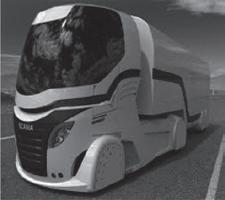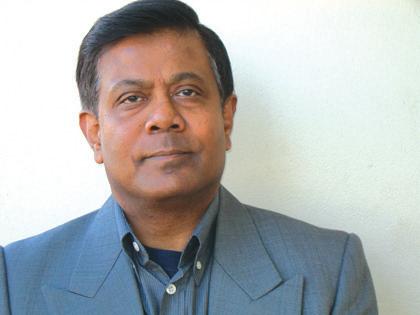
7 minute read
Berlinbreak
from 2012-11 Sydney (2)
by Indian Link
The city that was Hitler’s playground and Stalin’s dreamland has changed for the better
efficient network of S-Bahn and U-Bahn, makes me wonder how Berlin achieved such a massive transformation with such a short period of time.
Iwill defeat them here in Berlin or face my downfall,” said Adolf Hitler in April 1945 from the underground bunker when Soviet tanks were rapidly advancing towards the Third Reich capital city, already reduced to rubbles from constant Allied Forces bombings. We all know what finally resulted, to make the pages of history.
Berlin today
After 67 years, standing at the spot just above the bunker, I look around and see an avant-garde metropolis, not much dissimilar in character from any other 21st century European settlement. An attractive cityscape painted with wide boulevards and avenues, sprawled with parks and gardens, and filled with everything that today’s travellers look for – from shopping malls, art galleries and theatres to luxury hotels, restaurants, and cafes all efficiently connected by an
Its touristy attractions are countless, ranging from museums and palaces, to historical monuments. You can’t visit all of them in one go, but following guide book recommendations for tourists, I surf along Charlottenburg Palace, Berliner Dom and the Pergamon Museum; wander around stylish and fashionable Kurfurstendamm; shop at KaDeWe, the largest department store in Europe; dine in style at Hotel Adlon, frequented by celebrities from Charlie Chaplin to Michael Jackson; sip cocktails at the roof top bar of Hotel de Rome from where the view of the architectural silhouette at sunset is breathtaking; eat curry wurst, a spicy sausage served with bread rolls from a wayside stall; drink plenty of Pilsner beer; and all this before launching into understanding Berlin as it was before and after World War II.
Turbulent past
Considered as one of Europe’s younger cites, written reference into prominence much later in the 17th century under the Prussian Emperors, and continued till World War I in 1914. Since then the city passed through several turbulent incarnations, most significant being the Nazi and Communist periods, spearheaded by Adolf Hitler and Joseph Stalin, two names history will never forget.
Austrian-born Hitler wanted to become a painter, but after being twice refused admission by the Academy of Fine Arts in Vienna, he moved to neighbouring Germany. He worked his way up to become the crumbling nation’s Chancellor in 1933 and led the country into a monstrous war in 1939, that ultimately triggered his downfall in1945. He committed suicide prior to the Soviets taking control of the city. Post-war the city was divided into two based on political alliance. Berliners were thrown out of the frying pan into the fire. A heavily guarded wall was built to split a race with Stalin’s Communist Party taking charge of the eastern side.
History’s silent witness


You can feel the beats of this tumultuous history by visiting the impressive Brandenburg Gate, an getaway was built in the 18th century as a symbol of peace. Over the years it has withstood sun, rain and bombing; faced torture when Napoleon, after conquering the city, carried away to Paris the statue of a Greek goddess on a chariot crowning its top; watched Hitler celebrating the birth of his Third Reich in 1933, and triumphant Soviets raising the red flag twelve years later. After its division, Berlin felt like it was stranded in a death strip, as people on either side heard the cries of anguish from across the border. It also paid attention to dignitaries like John Kennedy and Ronald Reagan demanding unification, and burst into jubilation in 1989 when it ultimately did happen.
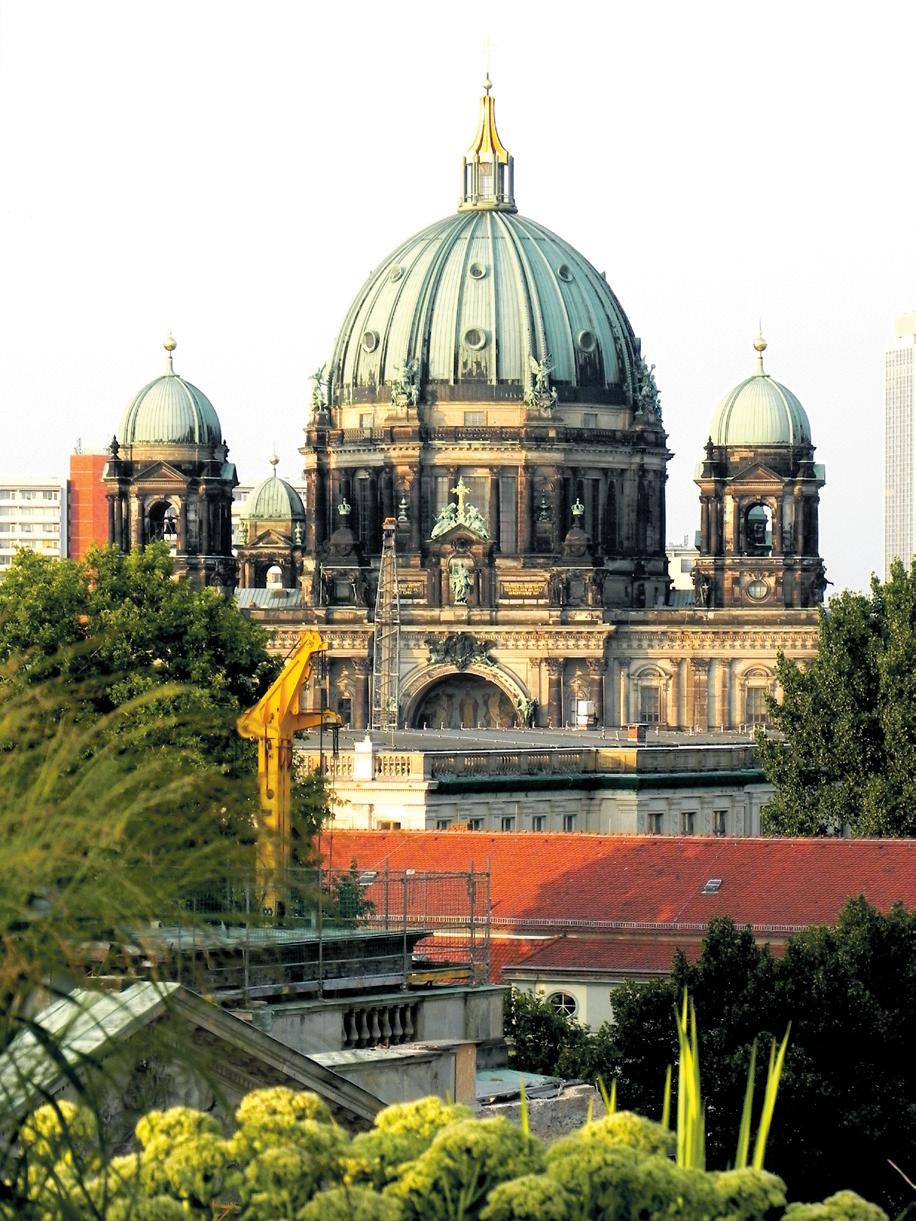

Standing in front of the wall and reminiscing about those significant episodes, I feel this silent monument tells us not to forget the shameful atrocities of the past, on which stand today’s glitzy Berlin. This feeling intensifies when I walk through a concentration camp just outside Berlin and see the new Holocaust Memorial, even whilst I stumble on the remains of the Berlin Wall, or wander along the corridors of
Nazi fascism
“You’ll understand the horrors of Nazism when you visit a concentration camp,” said Carlos, my German friend. A few of his ancestors died at the fatal camps used by Nazi authorities to remove enemies of the Reich and their cluster of ‘undesirables’ that ranged from Jews and Communists to homosexuals, gypsies and the mentally ill. It is claimed that between 1933 and 1945, over 3.5 million Germans spent time in concentration camps, and around 77,000 were executed. In addition, several millions were exterminated in similar camps in other Nazicontrolled countries, serving the agenda of racial genocide.
The Sachsenhausen concentration camp located 35 km away from Berlin was built in 1936, at the same time the city was preparing to host the summer Olympics. A poignant walk around the ruined barracks, punishment cells, execution grounds and crematorium, showed signs of unthinkable brutality. The living conditions were extremely poor, perhaps kept that way purposely so that inmates could die of starvation and disease to save the Nazis a bullet. Even now the small cells in the barracks emit an odd and unpleasant smell that plagued men and women who lived there for days. Unless you have a strong heart, it’s hard to face such gruesome reality that happened only in the recent past.
The life of Berliners whose fate was unfortunately sealed in the eastern quarter, didn’t mean filled with fear, restrictions and suspicion. The museum is housed inside the former head quarters of the Ministry for State Security, better know as ‘Stasi’ which considered itself the shield and sword of the party and
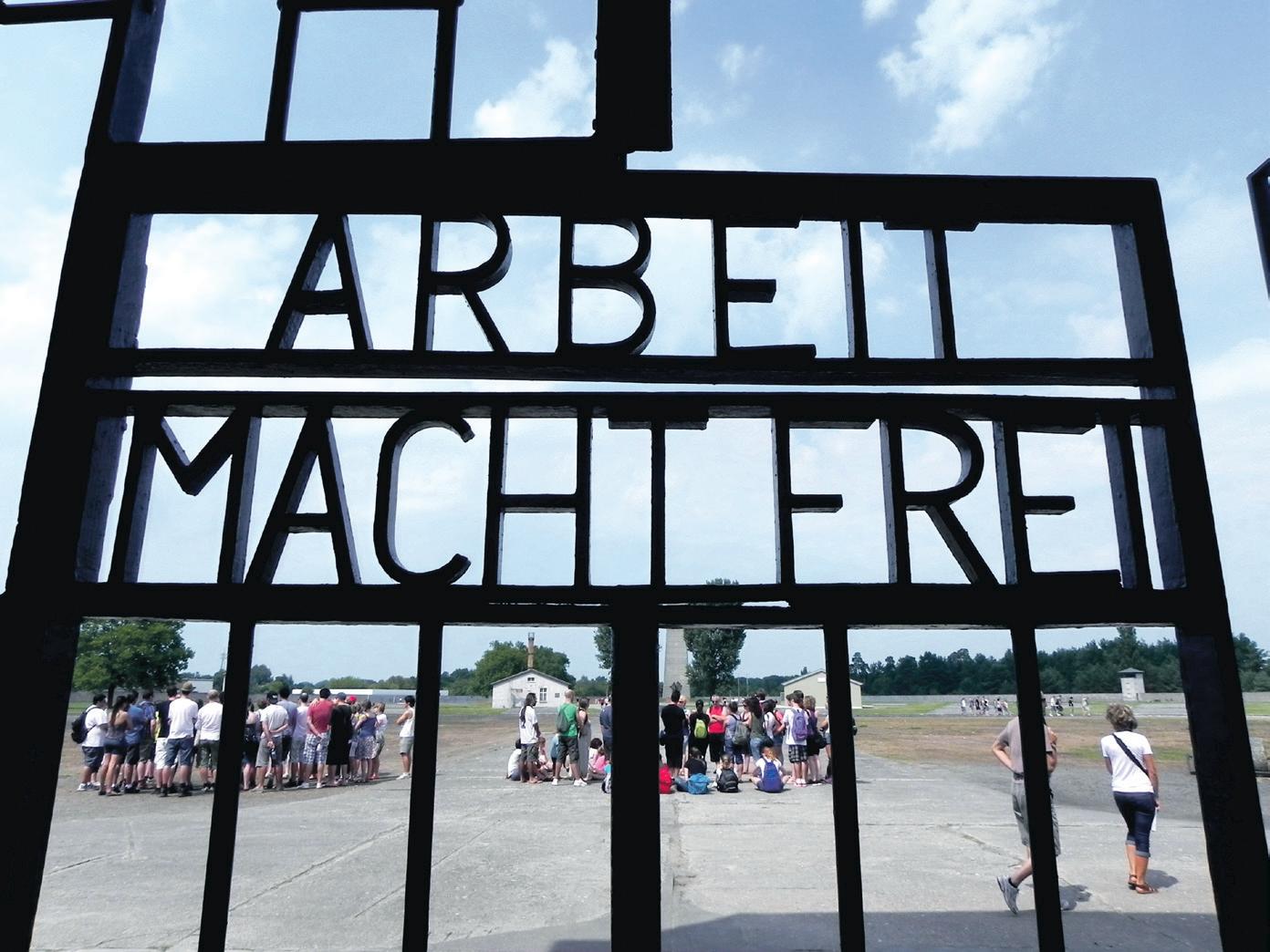
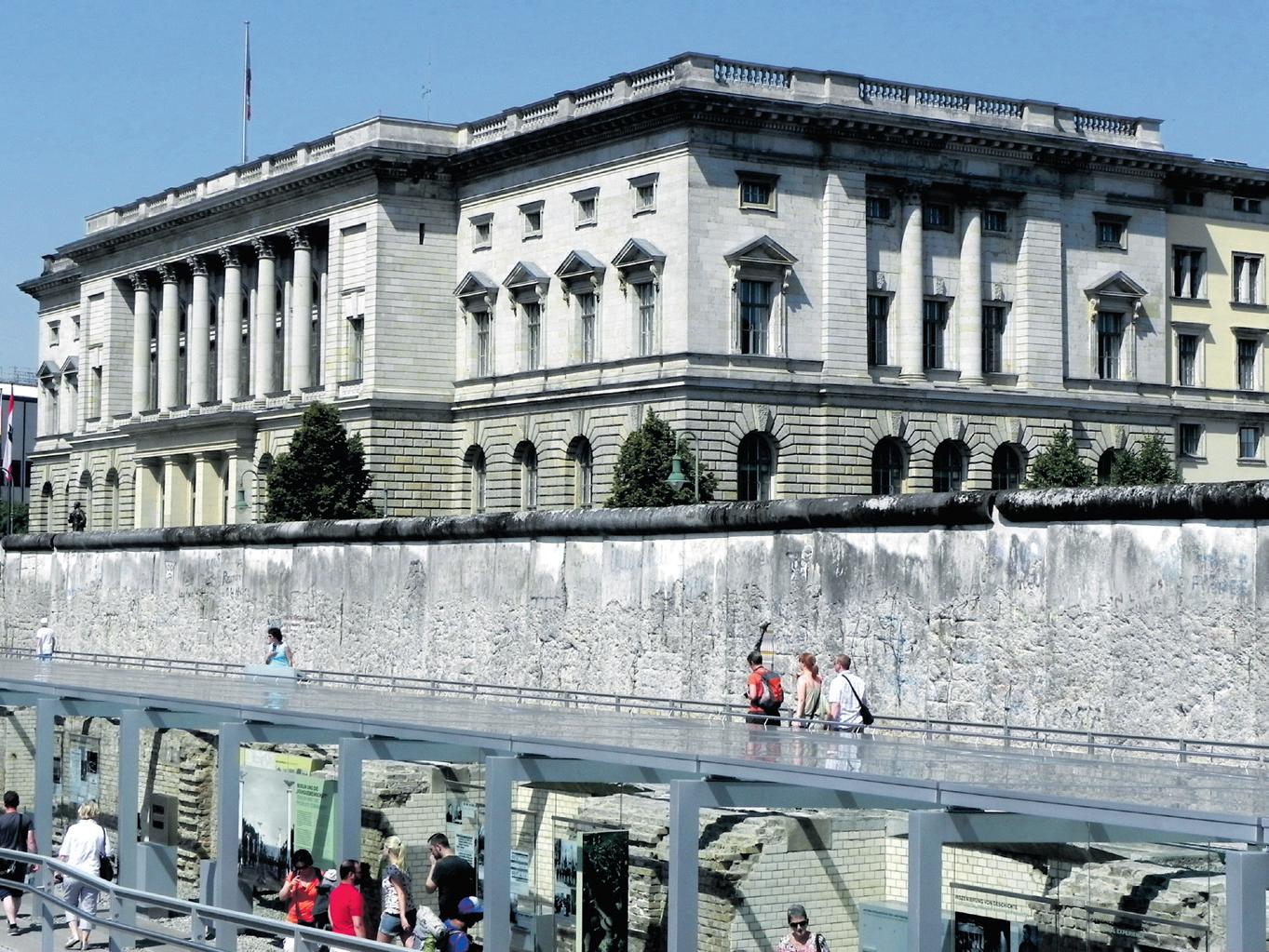
The city passed through several turbulent incarnations, most significant being the Nazi and Communist periods, spearheaded by Adolf Hitler and Joseph Stalin the government.
Since reunification, Berlin is dressed in many new types of attire. Historic buildings have been refurbished, most significant being the Reichstag, the German Parliament which has been crowned with a new glass dome that dominates the skyline. However, KarlMarx Allee is a wide, treelined avenue flanked on both sides with buildings reflecting socialist neoclassical architecture that still remains almost unchanged since it was built in 1949 as a showpiece of new East Germany. A gem of the quarter is Café Sybille. Portraying charms of the ‘50s, its attraction is not only the coffee, but also its numerous posters, photographs and documents that provide good historic information on how the area was developed. Going through them I realise that the thoroughfare when built was called Stalinalle, and featured a huge statue of Stalin, brought down in 1961 after his death and triggering the street name change. The waiter at the café shows me Stalin’s ear scavenged from the torn statue. This instantly signals to me that Berlin has changed, it has become fearless and doesn’t want to remember the darker sides of the past.
Main pic: Charlottenburg Palace
Clockwise from top right: Berlin Wall Sachsenhausen concentration camp East German officer’s uniform Berliner Dom Brandenberg Gate
The Stasi Museum draws a picture of daily life in East Germany, constantly filled with fear, restrictions and suspicion

Travel noTebook
Berlin
GETTING T h E r E

Fly Singapore Airlines (www.singaporeair.com) to Frankfurt or Munich from where there are excellent rail connections to Berlin. For all information on rail journeys contact Rail Europe (www.raileurope.com.au) that connects travellers with country railways and offers Eurail Passes, which is a perfect solution for multi-country travel spanning over a period of time.
AccommodATI o N
Overlooking the Spree River, conveniently located Melia Berlin (www.meliaberlin.com) offers excellent service and value. It’s near a train station and walking distance to many iconic attractions.
EATING
Eating A must visit is Amrit’s Lounge (www.amrit.de) at Mitte for an enchanting curry meal while engulfed in an vibrant and colourful atmosphere IN formATI o N More info www.visitBerlin.com
SEEkING GrooMS
m A tRimoni AL s SEEkING BrIDES
Seeking suitable match (from Australia, never married) for hindu girl 34 years, chartered Accountant (non-veg), living in Australia over 25 years, with eastern and western family values. Please email with all details on ganesh2011v@gmail.com
Punjabi groom sought for beautiful hindu Punjabi girl, 40 years, 5’4” height, Australian citizen, divorced (no kids) and holding teaching qualifications (taught in Australian and UK schools). Interest invited from qualified boys settled in Australia. Please contact girl’s brother on 0406 948 892. Match required for my sister, 5’2”, 34 years, never married, beautiful, slim, fair complexion, double degree holder, and Aust citizen, working in family business. We are a Punjabi Khatri family, settled in melb. caste no bar. Please send bio data and photo to matri@hotmail.co.uk
Punjabi Hindu Khatri girl, good looking, smart, homely, never married, 35, 5‘11”,looks very young, seeking tall Indian boy settled in Australia. Two brothers well settled in Sydney. caste no bar. contact with photo and details 0425 910 007 or ricky.bhalla@gmail.com
Well educated Punjabi family seeks professionally qualified well settled match for their Australian citizen daughter, 27 years, 5’ 4”, fair, slim, traditional Indian/ Western values, highly educated, master of Teaching and mBA from Australian universities. Working as project officer in well reputed company. Please email particulars with recent picture to schanderchopra@hotmail. com or call 02 9760 1832 / 0431 289 442.
Punjabi Saini boy in Sydney, Australian citizen, 30, 5’5”, divorced, customer Service rep, whole family well settle here, looking for single/divorced good hearted, family oriented girl. caste no bar. Send full detail to email: hsingh83@hotmail.com or SmS 0469 418 689.
Hindu Gujjar boy, 32, contact 0431 326 292.
Australian Permanent resident, working as Assistant house Keeping manager in Sydney, regular job in 4-star hotel, earning $50,000 per annum, divorced. reputed family in India. Looking for qualified, smart, sweet natured, down to earth girl.

Seeking tertiary qualified Hindu girl below 25 years, for boy with BA Acc. hon degree, non smoker, non drinker, stable job with strong values and well settled family in Australia. Preferred height, 5’4” and above with strong values. Please send full details to newrishta@y7mail.com
Seeking tertiary qualified Hindu girl, below 25 years, for boy with BA Acc.hon degree, non smoker, non drinker, stable job with strong values and well settled family in Australia. Preferred height 5’4” and above, with strong values. Please send full details to newrishta@y7mail.com contact 0431 326 292 or email baba_ankur@yahoo.com
Hindu Gujjar boy, 32, Australian Permanent resident, working as Assistant house Keeping manager in Sydney, regular job in 4-star hotel, earning $50,000 per annum, divorced. reputed family in India. Looking for qualified, smart, sweet natured, down to earth girl.



